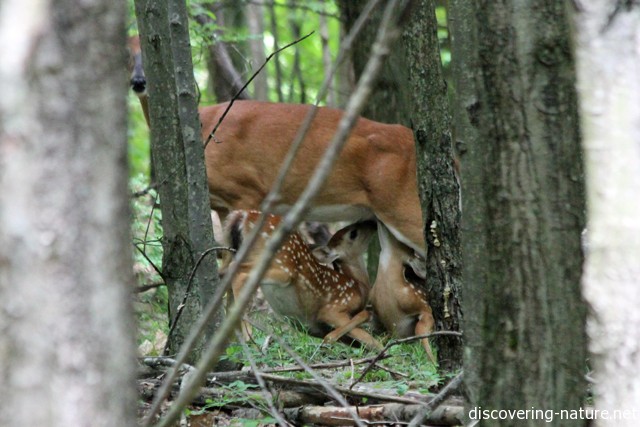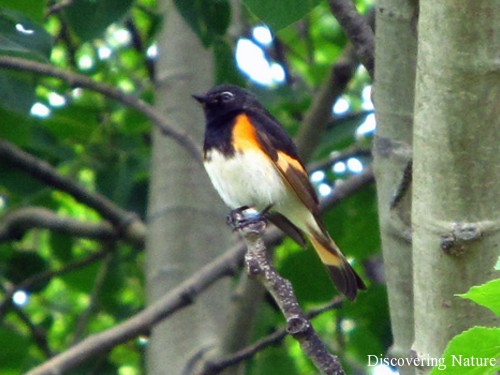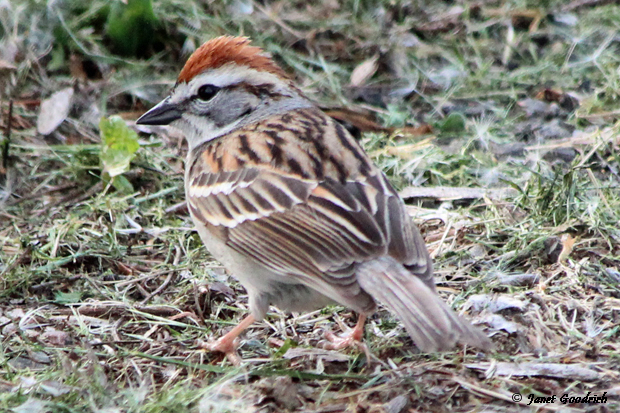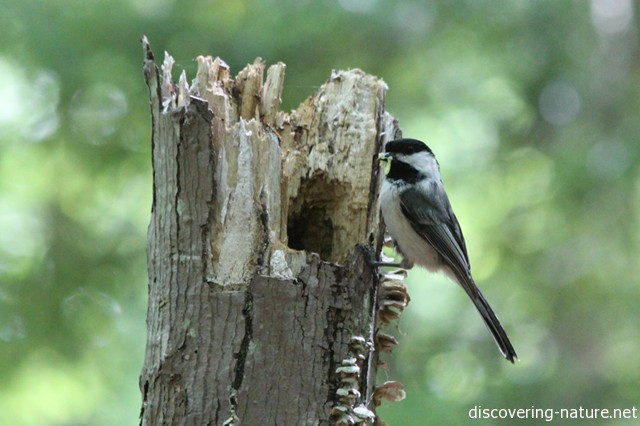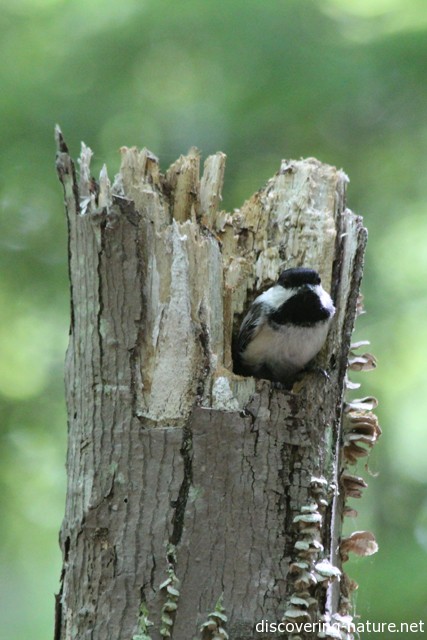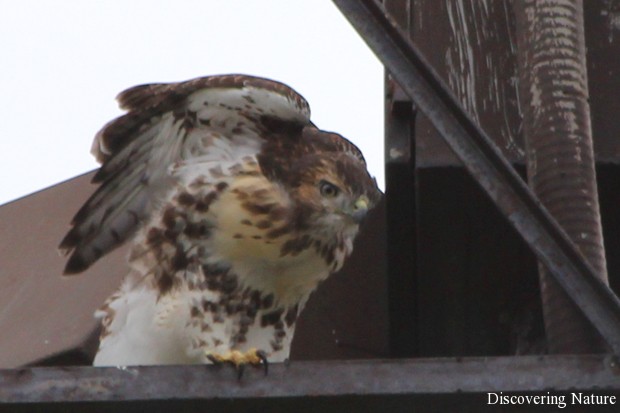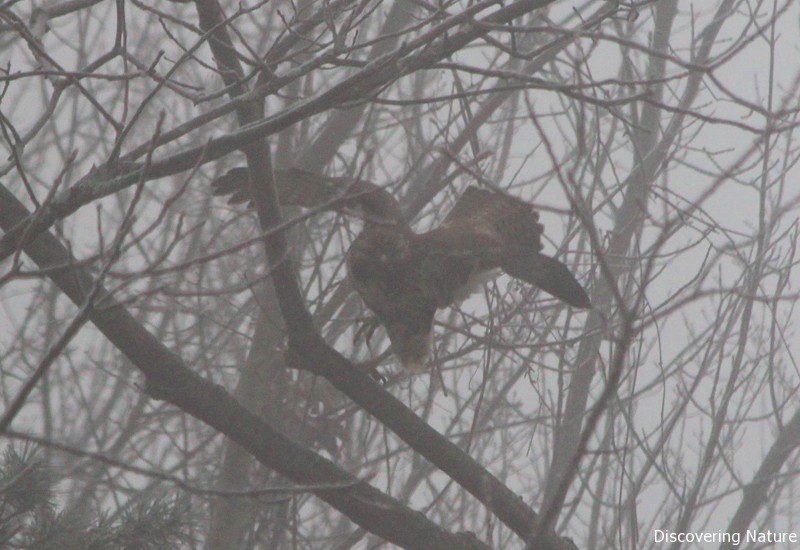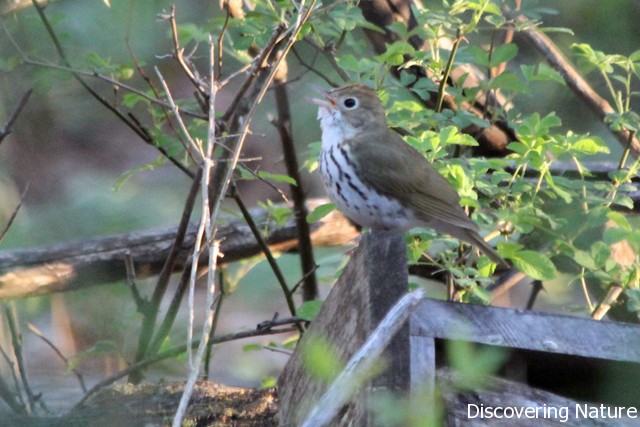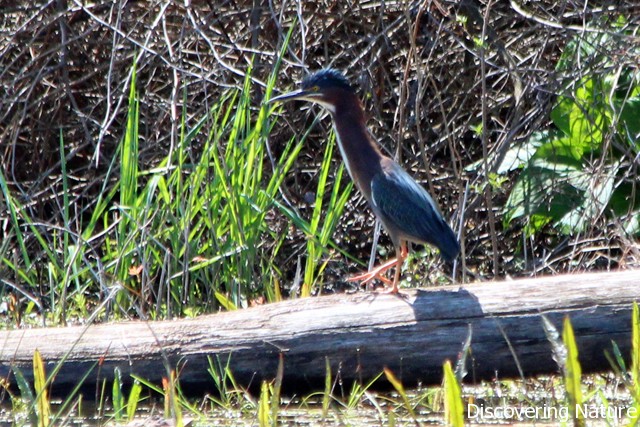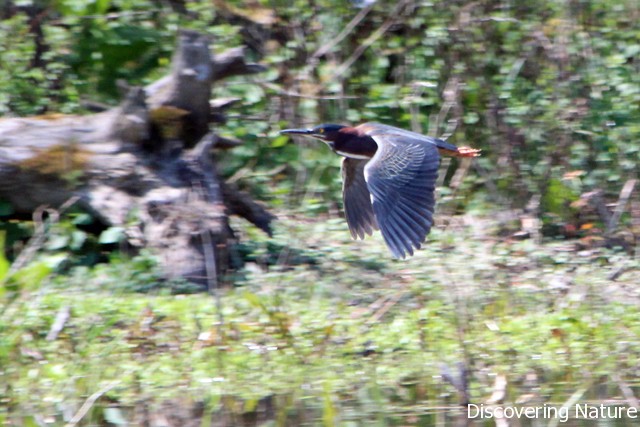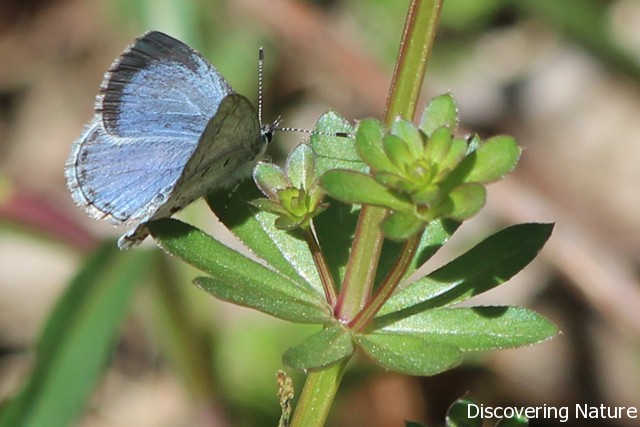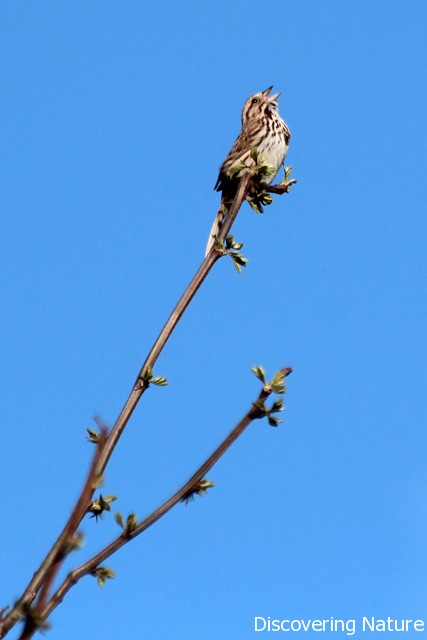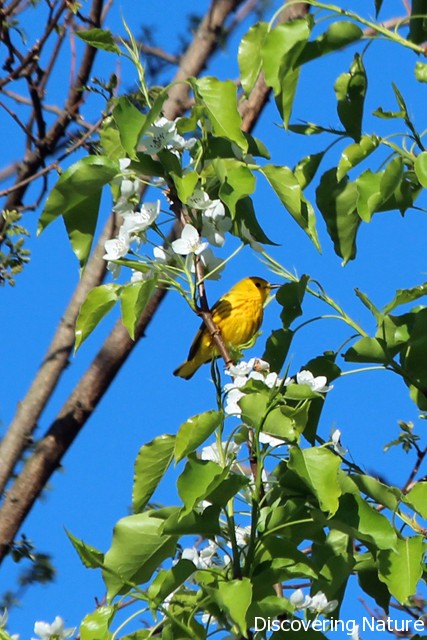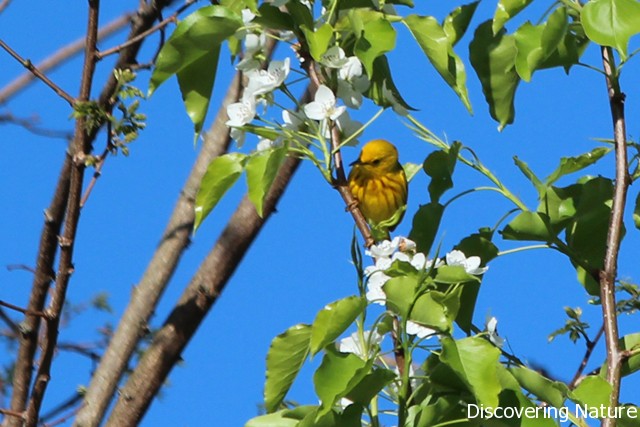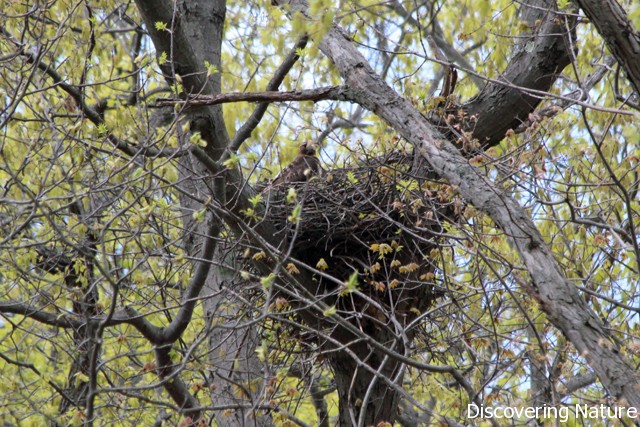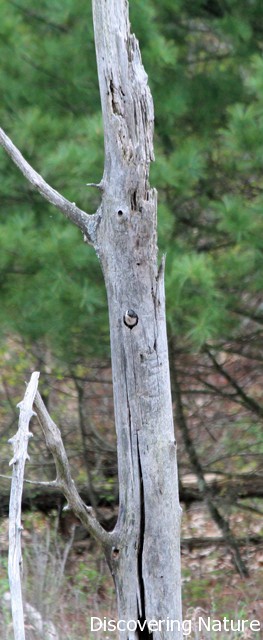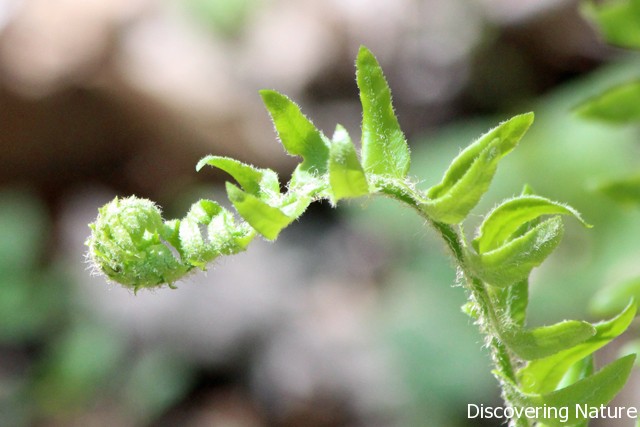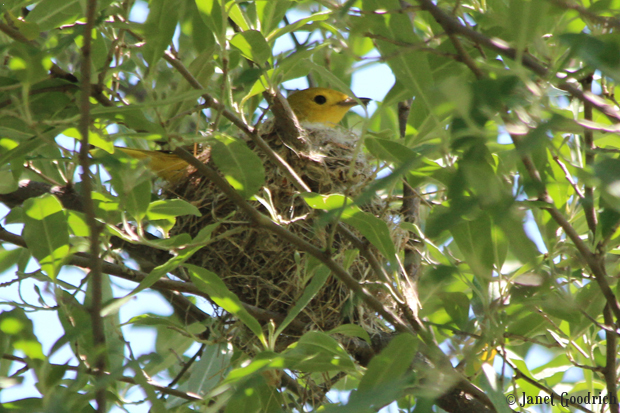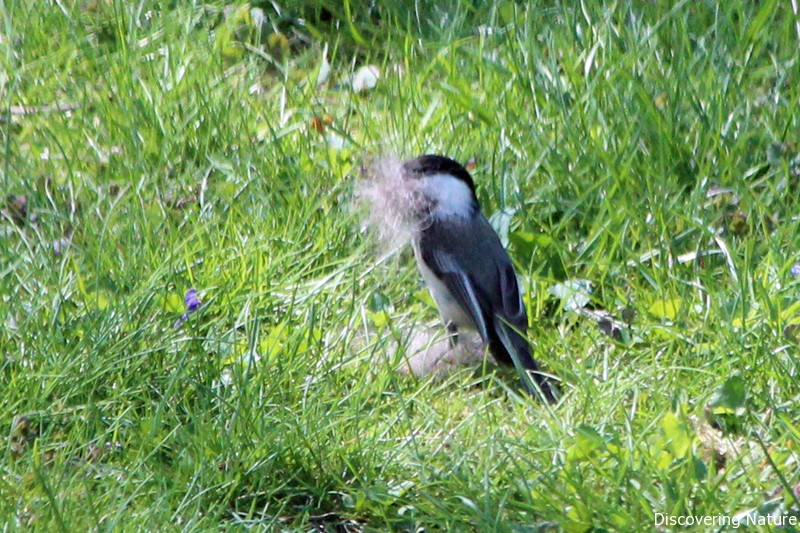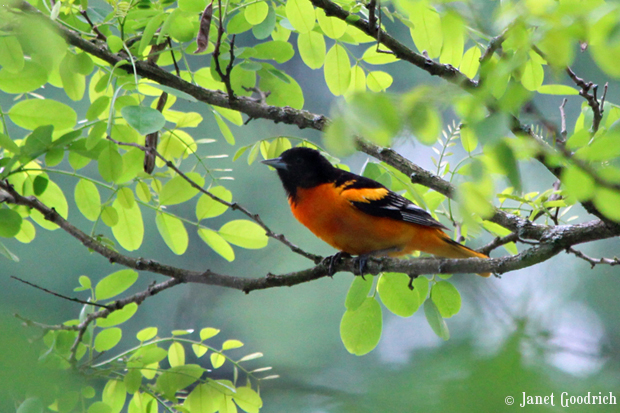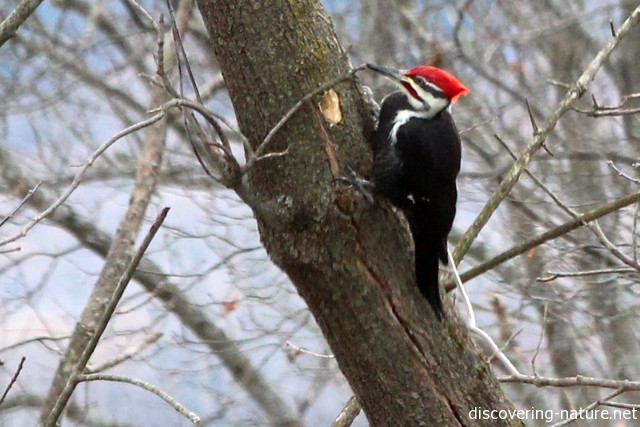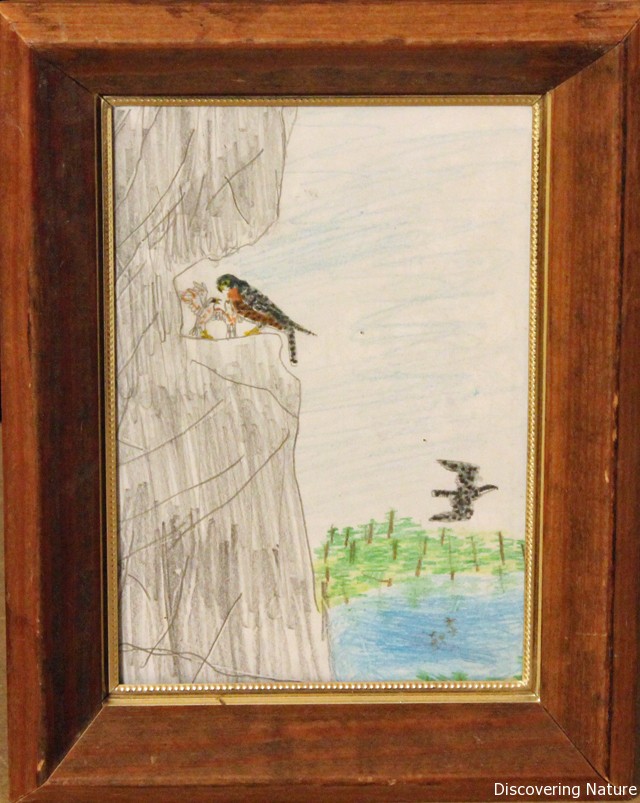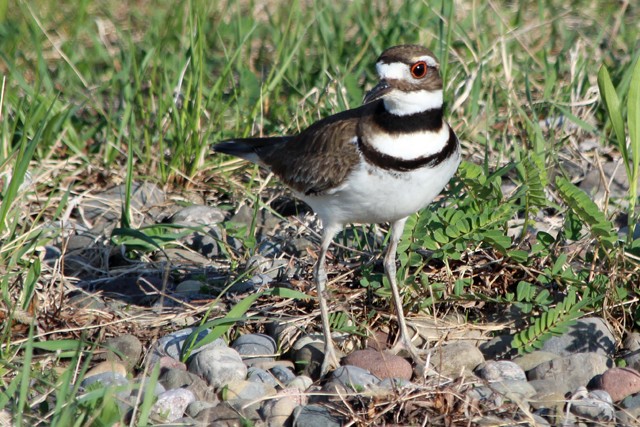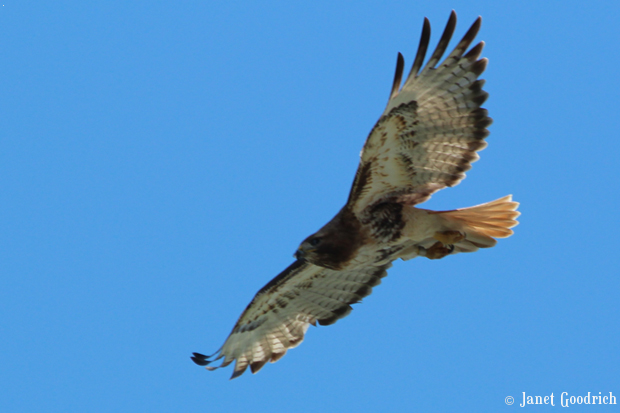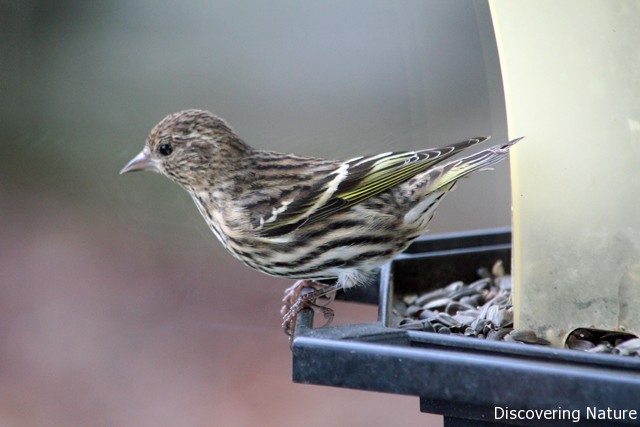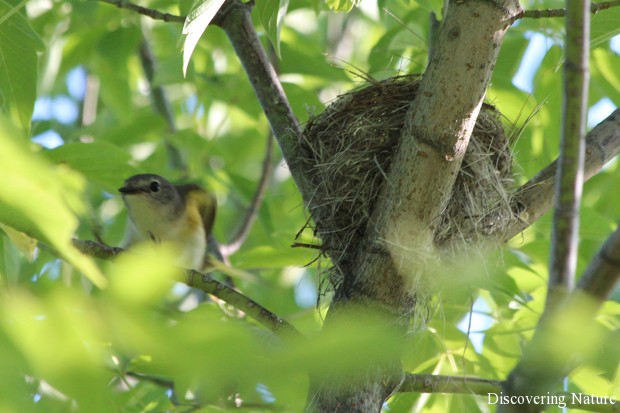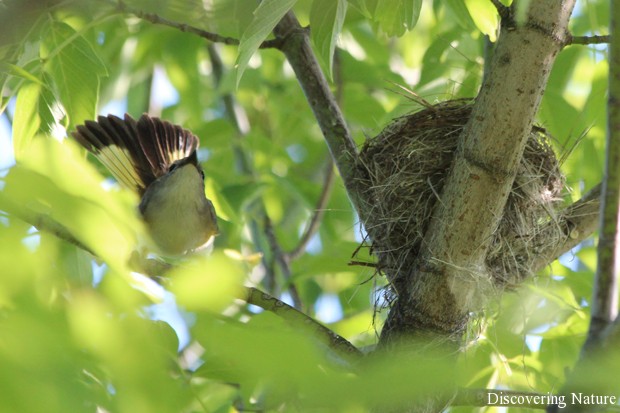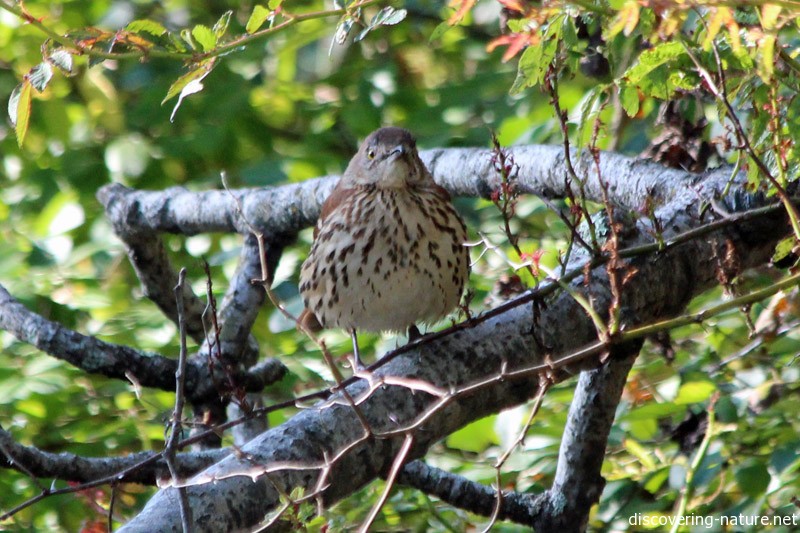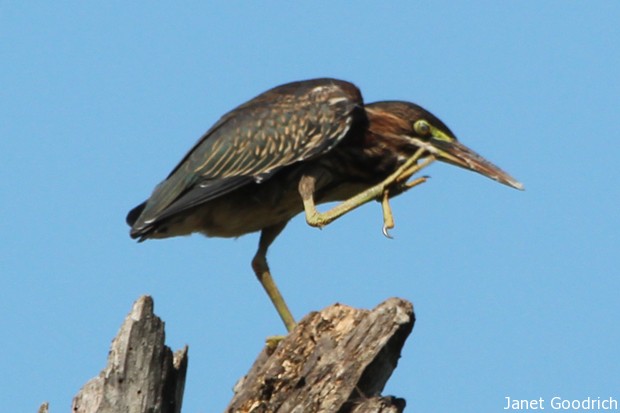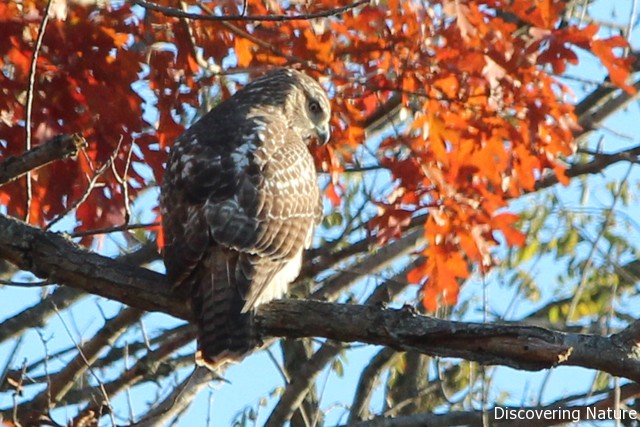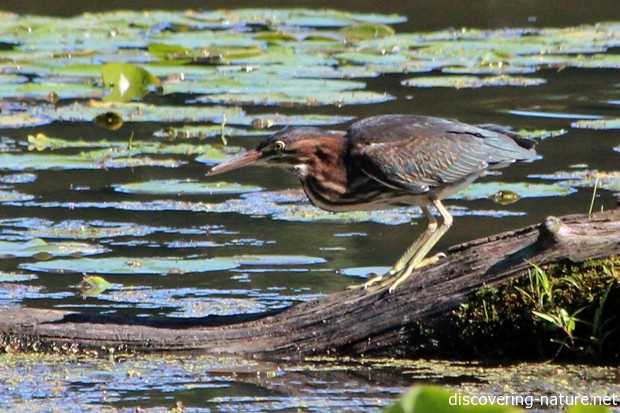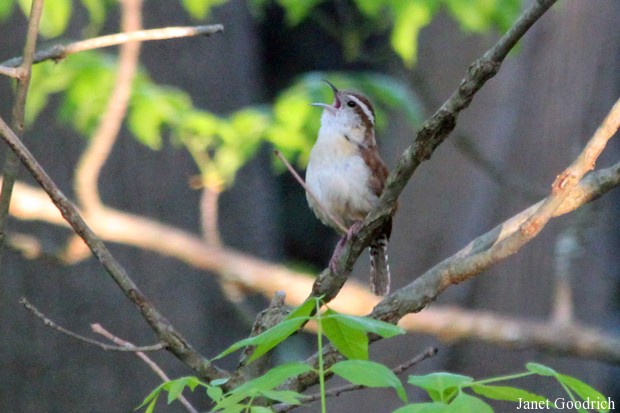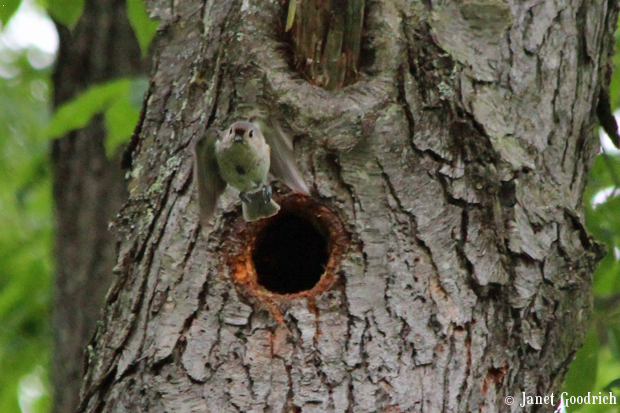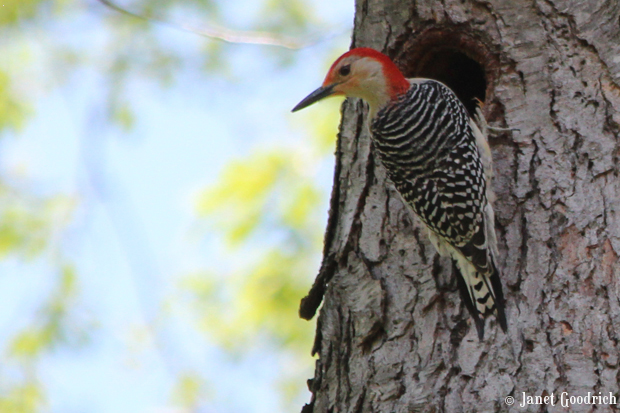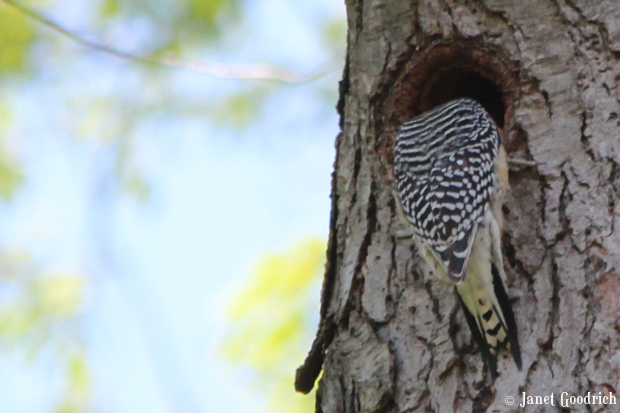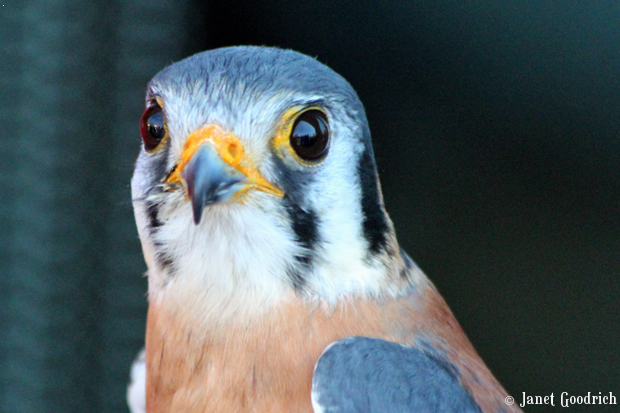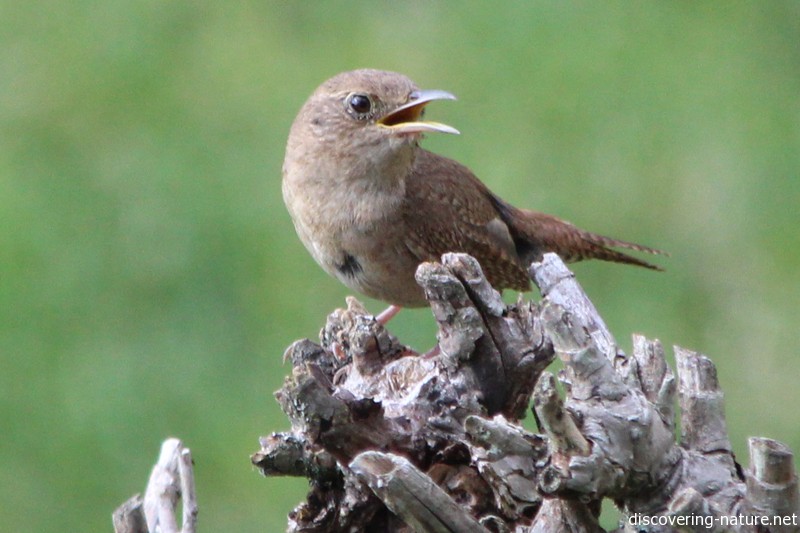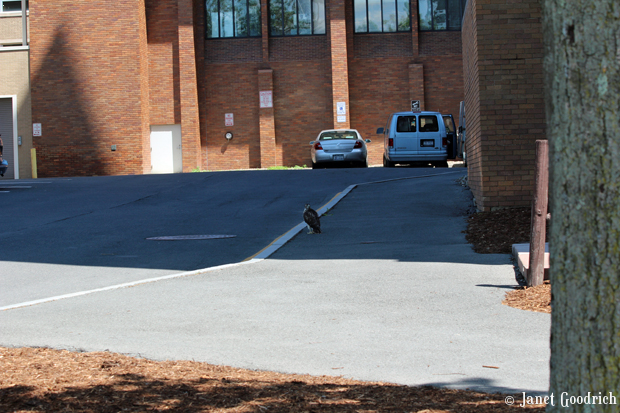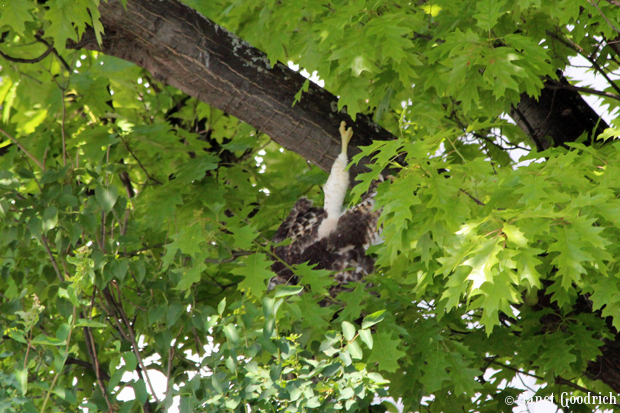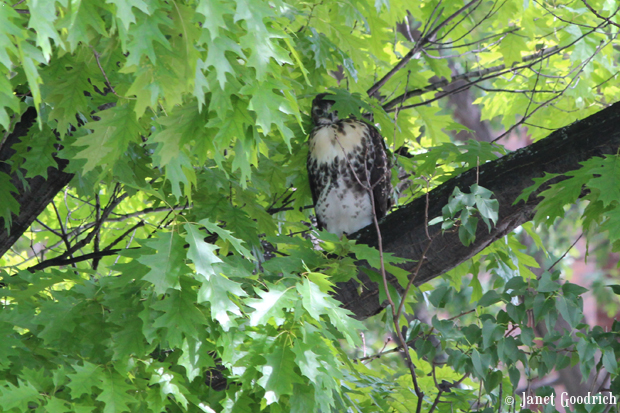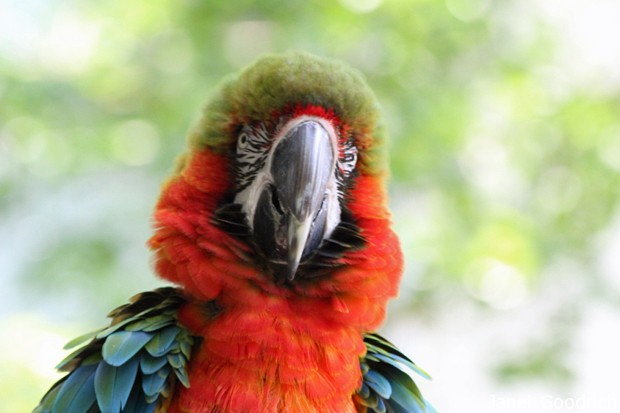-
Hungry
Everyone was feeding their young this week when we took our walk in the woods. This was probably a once in a lifetime sight… I think Mrs. Doe had a fast getaway in mind, but she tolerated her two hungry fawns for a minute before leaping cleanly over them and leading them quickly into the woods.
The redwinged blackbird babies were hungry too…
…as were the orioles.
Other sights…
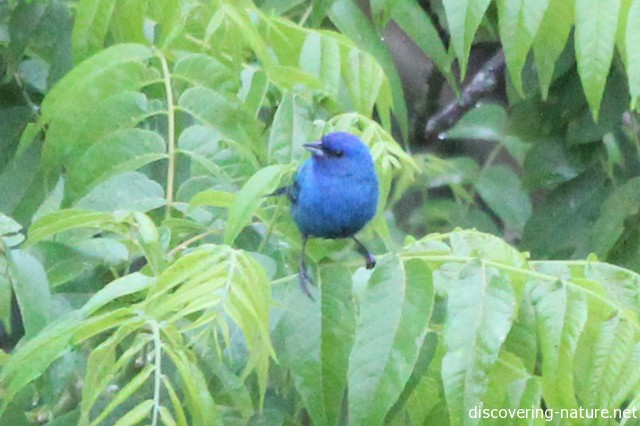
Indigo bunting 
Daisy 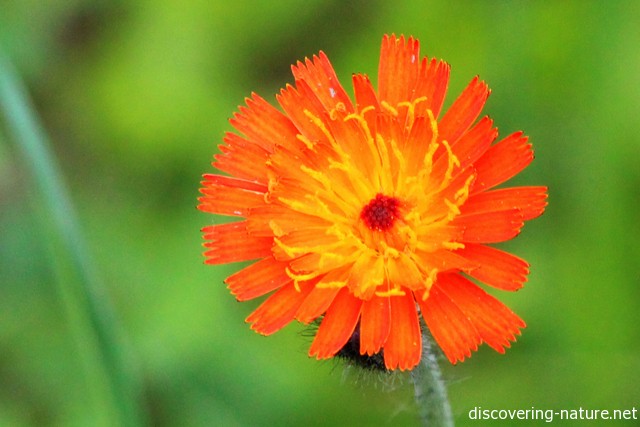
“Indian paintbrush” 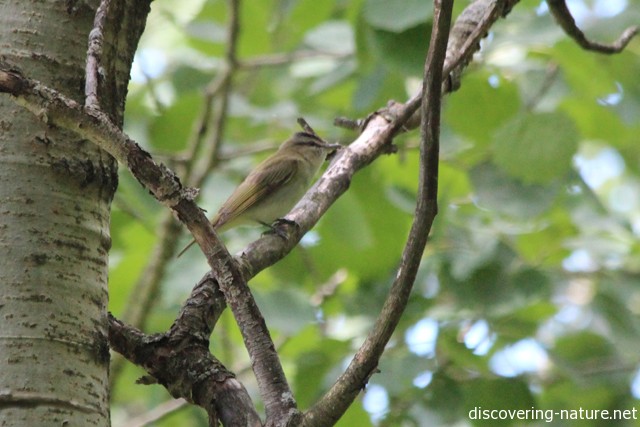
Red-eyed vireo That’s just a sampling… There were many other sights and sounds, too. This time of year it’s impossible to document them all.
-
Chickadee Nest
This active chickadee nest was a delightful discovery on a walk the other day. The parents were feeding young, coming and going nonstop with beaks full of caterpillars.
-
Celebrating Seeing
My daughters and I watched this pileated woodpecker in our back yard as we were eating lunch the other day. She captivated us for several minutes.
No sooner had she flown away than a rabbit appeared, gathering up mouthfuls of grass and leaf litter and hopping behind some trees to pad her nest. Now we know where to look for baby rabbits.
On the whole, this raised awareness of the creatures living all around us is the biggest plus of nature study. Who needs television if you have a window? Who needs computer games if you have eyes? The interest is simply there; all that’s needed is a very little effort to cultivate awareness.
It’s not always easy to be aware, though. Sometimes it brings sorrow. This year I notice several different areas around where bulldozers have cleared space for some kind of development, and every one of them will have an impact on birds or other creatures that lived in those spaces. Where will they go? And how much more space do humans need to take over, mow down, dig up?
Even something like Habitat for Humanity (which recently produced a house on an empty lot nearby) gives me pause these days. It sounds so positive. And it is positive to give someone an opportunity to help build their own home. But why take up new space to do it? Why not redesign an existing building standing empty? Every city has more than enough houses already, more than enough retail buildings and factory spaces. Why not use and re-use these spaces, rather than relentlessly sprawling outward like some seeping toxic spill?
Oh well… enough of the lament. Suffice it to say that I wish we gave more thought such matters before mowing down the bushes and trees to construct new buildings. Awareness — the ability simply to pay attention to what’s around you, wherever you are — is where an environmental ethic begins. Not legislation or speech-making. Opened eyes.
Speaking of which, I have seen many interesting sights of late that I haven’t recorded here, and what follows will be a long column of wonders.
Starting with an oven bird! I’ve heard these leaf-like thrushes many times calling from the forest floor, but never have I been fortunate enough to actually see one till this past weekend, on an early morning walk.
He was having a territorial squabble with another one nearby. The woods were full of them! Here, he’s standing on the ruin of an old nesting box.
At a nearby pond, we’ve seen the first of the green herons…
We’ve seen geese nesting…
…and geese newly hatched.
As I stood watching, I noticed movement from one grass tussock to the next. Meadow mice were darting like lightning from hole to hole, right out in the marsh. They’re the color of dust, but otherwise they remind me a lot of hamsters.
Water snakes abounded. None of them looked big enough to eat a mouse, but the frogs and wogs must be on the run.
I think this tiny butterfly is a silvery blue. Its wings are only about a centimeter wide. The meadow was studded with them; I also saw one bright orange butterfly too elusive to photograph.
The chipmunks are coming out of hiding — well, they’re awake. Some are still hiding.

Find that chipmunk Others look like woodland mariners sailing deadwood ships.
Happily, my daughter and I saw our first rose-breasted grosbeaks the other morning!
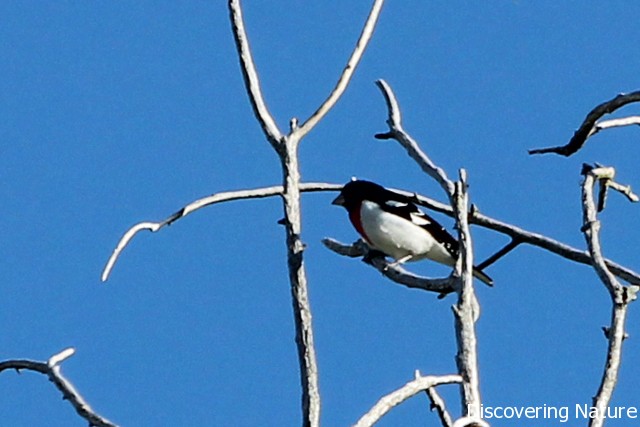
Mr Grosbeak 
Mrs Grosbeak There were other birds chorusing all around, including song sparrows…
…and yellow warblers.
It’s not every day that you get tracked by police while bird watching, but it happened the morning we saw these warblers. My daughter turned around, gasped, and said, “A police car!” We saw an officer circling our parked car and hurried back, fearing we’d broken some parking rule. “Oh, I was going to have her track you,” he greeted us, emerging from behind the car with a large police dog. Turns out he just saw our car and decided to take the opportunity to do some training!
There are several nests we’ve been keeping an eye on. We were thrilled to discover a red-tailed hawk nest in a spot we pass often, but it’s not terribly photographable. Still, as the nestlings grow and begin flappercizing, maybe we’ll get some better views (and pictures).
The other day, we were looking at a red-winged blackbird atop this snag when we noticed a tree swallow in a nest cavity beneath him.
Last but not least, the chickadees must have a few nestlings in this nest box outside our front window, because the parent birds have been active, flying to and fro and apparently feeding young.
It’s a great time of year for being outside. Here in the northeast the sense of release from the grip of winter seems so strong and so welcome.
Even our domestic animals like to get out and smell the flowers!

Whisper -
Beak full of fluff
Two days ago, my daughter combed the dog outside. It made our day yesterday to see this chickadee gathering up dog hair off the lawn for nesting material.
There’s going to be a very soft bed for some birdlets, somewhere!
-
Killdeer Nest
Mrs. Killdeer tried hard to lure us away from her nest with her broken wing routine. My husband is the one who spied these eggs, camouflaged though they are among the other stones.
I’ve seen a red fox twice at the other end of the airport from this nest. I hope he doesn’t find it. It’s always with mixed feelings that I become aware of a bird’s nest. There are so many strikes against them — predators and tromping people especially. I’ll check back in a week or so to see if these eggs are still there.
-
Sapsucker Heron

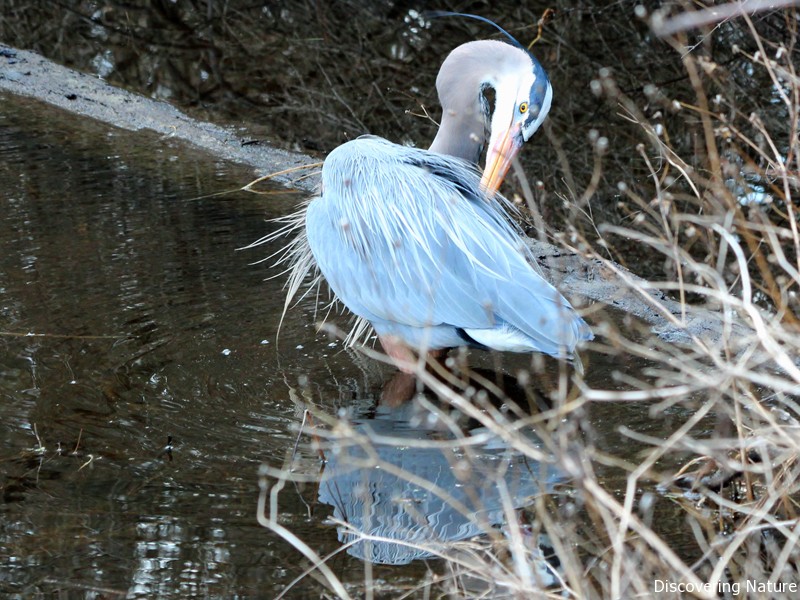
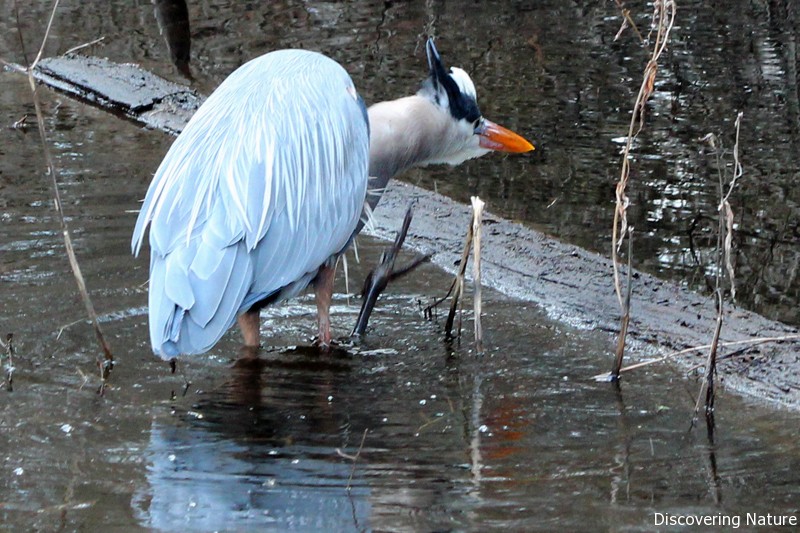 We saw that the male heron had made an appearance on the nest cam a few days ago, and when we walked around the pond at Sapsucker Woods we figured this was him. He was fishing in an alcove and we were quite close. I got some pics of him with one of the unfortunate fish he caught, but none of them are stellar.
We saw that the male heron had made an appearance on the nest cam a few days ago, and when we walked around the pond at Sapsucker Woods we figured this was him. He was fishing in an alcove and we were quite close. I got some pics of him with one of the unfortunate fish he caught, but none of them are stellar.It was kind of a man and wife who were watching him to invite the girls and me in to take their spot so that we could see the heron doing his patient, alert work. We passed on the favor to the next walkers who appeared.
-
Another delightful find
An American redstart nest!
American redstarts and yellow warblers are both gorgeous little birds I’ve noticed for the first time over the last year. They’re also resourceful. Both are often targeted by brown-headed cowbirds, who lay their eggs in the nests of other birds. Redstarts and yellow warblers, when they notice a cowbird egg, counter by building another layer of nest over the top.
I’d love to see the male redstart, which is more colorfully marked. I saw my first one last year, not far from the site of this nest. This seems like a promising vicinity to see another one!
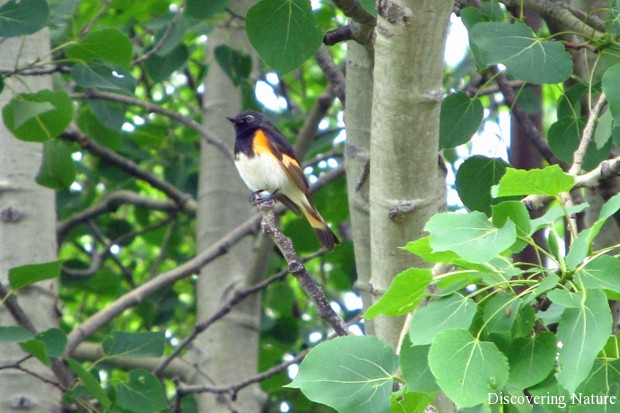
Last year’s redstart sighting -
Hidden
My daughter spotted this yellow warbler nest on a walk we took this morning. It’s a great example of something I’ve marveled about before: more eyes = more wonders. It seems like you would see more going alone into the woods because it’s much quieter and less disruptive. But you never know what you miss for the lack of additional eyes. I’ve seen some neat things by myself, but this one I’d have missed entirely!
The girls are excited about going back each week to investigate the nest activity.
-
Mighty Mouse
On Tuesday we went to visit the site of a suspected red-bellied woodpecker nest cavity on one of our haunts. I wondered if we might see some nestling activity.
I took these pictures on May 11, and the bird appeared to be feeding young. We hadn’t been able to observe the site again, and I knew that by this time, there was a good chance that any possible woodpecker nestlings had fledged.
Turned out I was right. We saw nary a woodpecker… but this tufted titmouse came flying briskly out of the woodpecker hole!
I’m not sure if the titmouse is nesting in the woodpecker’s former home, or if it was just foraging for insects in there. We’ll have to check in again soon to see what we can find out.
It’s a brave looking little bird, isn’t it? — Looks like it feels ready for anything.
-
Fledge!
My daughters and I had a feeling today would be the day that one of the Cornell hawks would fledge. So capitalizing on the flexibility of schedule homeschooling gives us, we made the hour’s drive to Ithaca on this glorious sunny morning.
We were watching the cam when the first hawkling made its appearance after a spring snow. We’ve been watching the cam through numerous feeding and flapping sessions. But it was a thrill indeed to be there at the moment of the first fledge!

Hawkling on the landing, pumping its wings 
Getting ready to... 
FLY! 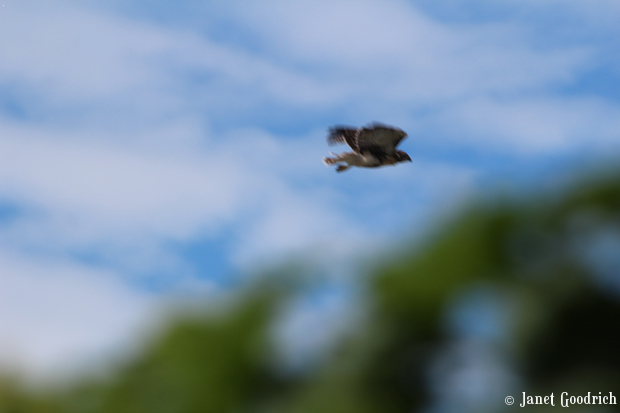
Into the wild blue yonder Where did it go? After an anxious search of nearby trees, a fellow hawk-watcher located the fledgling on the ground at a busy corner of the building across the street.
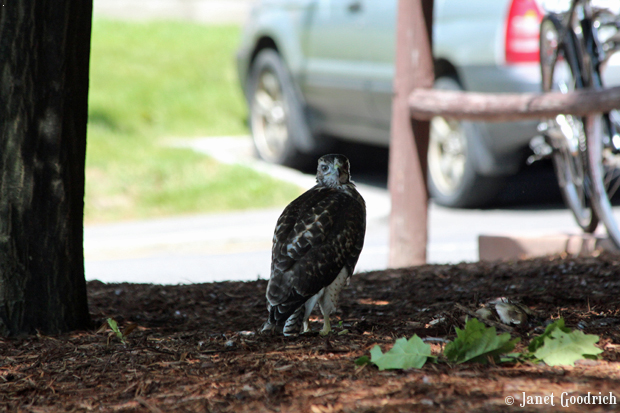
Feeling the ground for the first time A crowd was congregating, and I was getting nervous. It’s an awfully busy spot for a young hawk. But the crowd served the purpose by alerting drivers to something unusual going on, and any cars that drew near slowed way down.
After perhaps ten minutes on the ground, the young hawk gathered its nerve and flew, screeching, across the street and into a small oak — where it landed upside-down and dangled for a minute. It was a tense moment, but eventually the fledgling righted itself.
Red had flown over a few times, way up high. She was on a light pole across the fields when the youngster took flight. We left, hoping to give the bird some space to calm down and get reconnected to its parents. Ezra was on a roof nearby, preening, and I’m sure Red wasn’t far away. I got some great flight pics of her; I’ll post them tomorrow, as well as a few more of the chicks in the nest.
We’re grateful to Cornell for this experience! We’re wishing the young hawks well as they move into this next steep learning curve on their way to adulthood.
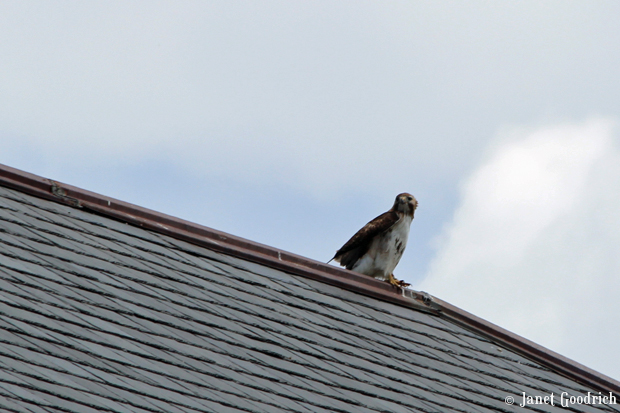
Ezra
